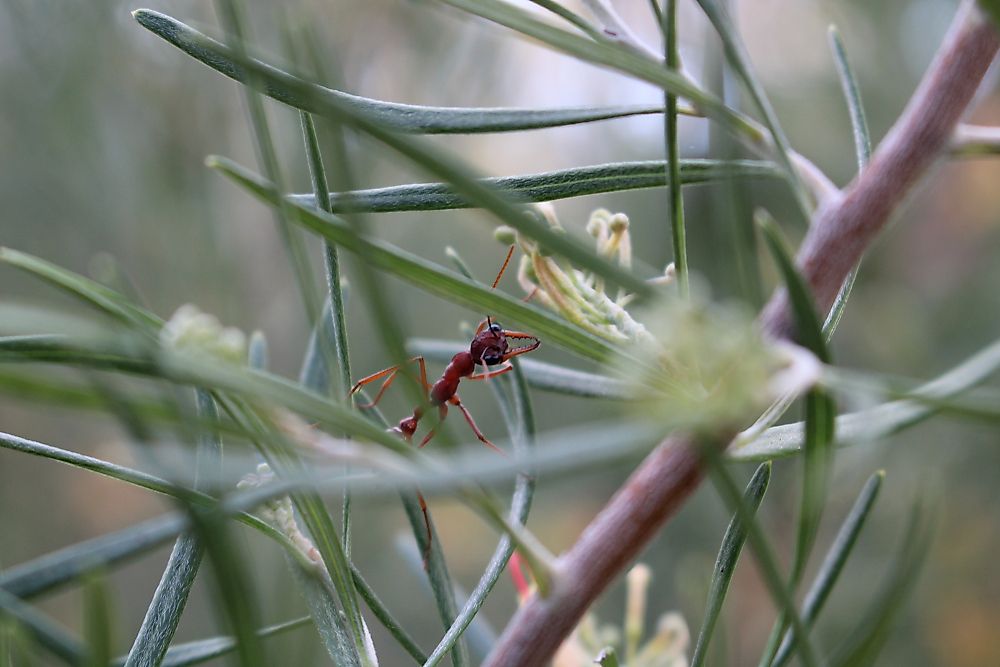
The World’s Most Dangerous Ants
Bulldog Ants
The Guinness World has listed the bulldog ants as the world’s most dangerous ants. Myrmecia, commonly known as Bulldog ant, is one of the large ant’s genera that is made up of 93 species that are widely found in Australia. Bull ants are huge, alert ants which can attain a maximum length of about 0.16 inches. Bulldog ants have long slender mandibles, large eyes, and venom-loaded stings. Bulldog ants have a well-developed sense of vision and can chase an intruder for a good distance from their colonies. Most bulldog ant species have bright orange or red colors on their abdomens or heads. Bulldog ants have caused three fatalities since 1988.
Bullet Ant
The bullet ant, also known as Paraponera clavata, is named after its painful sting. The Paraponera clavata‘s sting tops the Schmidt’s sting-pain index, and many people have compared its bite to being shot. The Bullet ant’s sting causes a wave of throbbing and burning pain that lasts unabated for 24 hours. Some of the symptoms associated with a Bullet ant’s sting include tachycardia, edema, lymphadenopathy and presence of fresh blood in the victim’s feces. Bullet ants are about 1.2 inches long, wingless and reddish-black. They aren’t aggressive ants, but they can be vicious when defending their nest. Bullet ants are distributed throughout South and Central America, particularly in the wet neotropical realm.
Army Ant
Army ants, also referred to as “raids”, are aggressive predatory foraging ants that are quite harmful to human beings. Army ants are aggressive, and since they don’t have permanent nests, they tend to migrate from one place to the other looking for food. Most ants usually send some few individuals to scout for food, but army ants send leaderless cooperative groups of foragers who can overwhelm a prey. When foraging the trails of army ants can be over 328 ft long and 65.6 ft wide. These ants stay in a path using concentrated-gradient of pheromones. An entire colony can consume over 500,000 prey animals per day.
Fire Ant
The fire ant is the name of more than 200 ant species belonging to the genus Solenopsis. The fire ants are known for delivering the most painful sting of all ants. Some fire ant species are referred to as tropical fire ants, red ants, and ginger ants. The fire ant’s sting is excruciating and is characterized by a burning sensation and hives. A bump usually forms on the place where the ant stung after some few hours accompanied by further irritation and pain, especially if the victim was stung a number of times at the same spot. The bump can develop into a pustule within 36 hours, and if scratched, it can become infected. Fire ants can kill a small animal. Some individuals develop an allergy to this ant’s venom, and if left untreated for a very long time, the victim may experience anaphylaxis.
Florida Harvester Ant
The Florida harvester ant is a harvester ant’s species which belongs to the Pogonomyrmex genus. Florida harvester ants are native to the deserts of South, Central, and North America. While there are 22 harvester ants species in the U.S., Florida Harvester is the only species found in the eastern parts of River Mississippi. Florida harvester ants are known for collecting seeds for food. Florida harvester ants are not aggressive; however, when cornered they can sting. Florida harvester ants have one of the most painful stings of all ants. The pain can last for a very long time with the swelling occurring as its venom spread through the victim’s lymph channels.
Green Tree Ant
The Green Tree ants also referred to as the weaver ants, are found in Tropical Asia and Australia. They are eusocial ants belonging to the order Hymenoptera and family Formicidae. The green tree ants reside in trees and are famous for their nest-building behavior, whereby they create their nests by stitching the tree leaves and establishing a colony. Each colony has over 500,000ants. They don’t sting, but they have a painful bite. Green Tree ants are the most valuable ants consumed by human beings. Other than being a reliable source of fatty acids and proteins, these ants can cure fertility complications and stomach infections.
Pony Ants
Pony ant, also known as a green ant, is one of the most terrifying ants on the planet which is common in Australia. The length of the Pony ants ranges from 0.2inches to 0.28inches with the male being smaller than the queen and the workers. These ants are known for their unique metallic appearance that varies from purple to green. The green ant has a highly potent-sting, which is very painful. Their sting has enough venom to cause anaphylactic shock in sensitive individuals. Other than it being dangerous to human beings, the pony ants can be quite beneficial. Pony ants can help with agricultural pest control by killing pests like termites and beetles.
Jack Jumper Ant
The Myrmecia pilosula also referred to as jumper ant, or jack jumper ant is a poisonous ant species that is indigenous to Australia. Jumper ants are mostly found in southeast mainland Australia and Tasmania. Jumper ants are large ants with the queen being about 0.63 inches long and the male being 0.47inches long. The worker ants are about 0.55 inches long. Jumper ants can jump long distances, and they can kill their prey by injecting venom. Their stings can cause a mild localized reaction in human beings. The jumper ants killed four people in Tasmania from 1980 to 2000. The Jumper ant’s venom is immunogenic and has caused over 90% of ant allergies in Australia.


 Users Today : 9
Users Today : 9 Total views : 468391
Total views : 468391